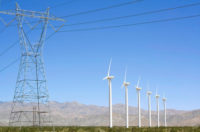
The slide in oil prices is starting to play havoc in bottom-line results among sector firms that had not anticipated such a rapid falloff, as owners foresee project impacts and engineering and construction firms that geared up for larger roles in a booming market hope for the best and plan for the worst. While analysts and construction industry execs speculate on a price hike this year, others still see inevitable impacts on work prospects, results and staffing.
"Given the dramatic decline in oil prices in just three months, I think many industry CEOs initially took a wait-and-see approach from their clients to see if prices were just fluctuating from volatile trading activity or if this was something more sustainable," says Steven Gido, principal at Boston-area industry management consultant Rusk O'Brien Gido & Partners. "However, a fear of prolonged lower oil prices is starting to manifest itself."
Steven Gilbertson, energy sector managing director at investment firm D.A. Davidson, predicts that US oil & gas capital spending will be down 35% in 2015. "This will reduce cash flow and flexibility as firms focus on reducing expenses," he says, adding that "oilfield service firms are facing the biggest risks, particularly those associated with land drilling for oil. Businesses that are tied to rig activity will be negatively affected in 2015 as rigs are idled and the remaining active rigs and services come under pricing pressure from competitors and customers."
But he notes that midstream firms "will be mostly insulated from the commodity price drop."
Energy firm Encana Corp. in mid-December announced 2015 capital-investment plans of at least $2.7 billion, based on $70-per-barrel oil, but in a Jan. 9 Seeking Alpha update, one analyst said, "If oil prices sustain below $50 per barrel, I expect a deeper cut in the spending plan."
Doug McIntyre, a company spokesman, said that "despite the current weak oil price environment ... we are advancing our most strategic assets, scaling back where required, and accelerating the capital and cost efficiencies we have achieved over the past 12 months."
He says 80% of the firm's 2015 capital program is being directed to "four high margin [shale] plays—Montney and Duvernay in Canada, and Eagle Ford and Permian Basin in the US. "We have put forth a disciplined and flexible capital program for 2015 based on conservative price assumptions and will adjust our pace of development if necessary to ensure we protect our balance sheet," he says.
Shares of Caterpillar Inc. fell 6% on Jan. 5 after a J.P. Morgan downgrade linked to "concerns about the company's direct exposure to oil and gas," said a MarketWatch note. It said 27% of Cat's total revenue "is facing pressure in 2015 and 2016" from direct and indirect sector impacts.
Real estate firm CBRE last month said in The Houston Chronicle earlier this month that city office building would suffer as energy tenants rethink space needs if low oil prices remain steady or drop in six months.
The slide already is causing angst for E&C firms that made big sector bets through acquisition.
Credit Suisse's industry stock index fell 3% for the week ending Jan. 9, "largely tied to the decline in crude prices," says lead sector analyst Jamie Cook. D.A. Davidson lead E&C analyst John Rogers said on Jan. 7 that its stock index was down 21% for 2014, including firms with little exposure to oil and gas projects.
"The magnitude and velocity of the decline has raised concerns that [it] is related to falling demand and/or could lead to economic disruptions," he says. "This has and will continue to create near-term confusion and harm for E&C firms, many of whom ... revamped their operations to cater to energy firms," adds Gido. "It will cause a shakeout of players and operations, like the land development bust in the late 2000s."





Post a comment to this article
Report Abusive Comment